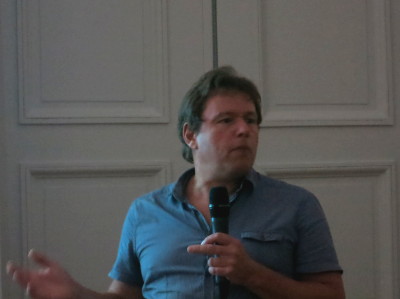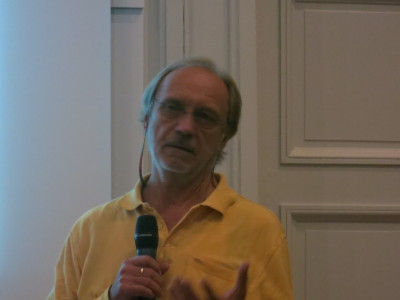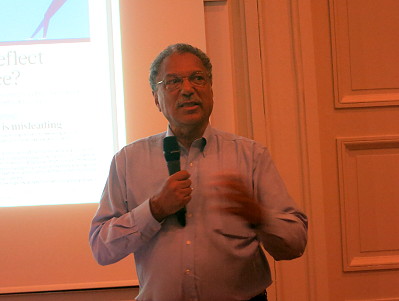 Das jährliche Treffen des FishBase Konsortiums war wieder eine Gelegenheit ein öffentliches Symposium rund um die neuesten Forschungsergebnisse zu veranstalten. Der Gastgeber war dieses Jahr das Muséum national d'Histoire naturelle in Paris. Das Symposium fand daher vor historischer Kulisse im Amphithéâtre Rouelle statt, umgeben vom berühmten Jardin des Plantes.
Das jährliche Treffen des FishBase Konsortiums war wieder eine Gelegenheit ein öffentliches Symposium rund um die neuesten Forschungsergebnisse zu veranstalten. Der Gastgeber war dieses Jahr das Muséum national d'Histoire naturelle in Paris. Das Symposium fand daher vor historischer Kulisse im Amphithéâtre Rouelle statt, umgeben vom berühmten Jardin des Plantes.
Nach dem Grußwort des Präsidenten des Museums, Bruno David, der die Teilnehmer willkommen hieß, stellte Nalani Schnell faszinierende Einblicke in die ausgefallene und wunderschöne Welt der Fischlarven und der ihnen gewidmeten Museumskollektion vor. Sie erläuterte neue Einsichten über die Zuordnung von Larven zu bekannten erwachsenen Fischen. Oft erfordert diese schwierige Aufgabe die Anwendung einer ganzen Serie von Forschungsmethoden von morphologischen Studien bis zu DNA Analysen, und wenn möglich, sogar der Aufzucht der Larven bis zum erwachsenen Fisch.
Patrice Pruvost, Consortium member and host of the meeting, spoke about an observatory of marine biodiversity in the southern ocean. He was followed by Paulo Brito of Brazil who suggested to introduce fossil fish species in still existing modern fish families as a way to improve phylogenetic and biogeographical understanding of today's fishes, among others. The consortium accepted this proposal unanimously.
 Rainer Froese of GEOMAR in Kiel, Germany, reported on his latest research about determining the intrinsic rate of population growth as a key element to advise on management and conservation. He had completed the assessment already for the first 1000 stocks.
Rainer Froese of GEOMAR in Kiel, Germany, reported on his latest research about determining the intrinsic rate of population growth as a key element to advise on management and conservation. He had completed the assessment already for the first 1000 stocks.
Once introduced into the webversion of FishBase, these parameters can be extremely valuable to assess the resilience of exploited populations.
Having the indicator available of a growing number of species is also important for rebuilding stock sizes so that they can produce maximum sustainable yield.
Cornelia E Nauen spoke about using FishBase to develop teaching materials about the functioning and changes of marine ecosystems in response to demands by artisanal fishers in Senegal.
Daniel Pauly presented the results of more than 10 years of painstaking work by more than 350 scientists in many parts of the world aiming at the reconstruction of marine catches by country and major island.
 The starting point was the incomplete reporting of marine catches by national governments to the Food and Agriculture Organization of the UN (FAO), the only organisation collating global production statistics.
The starting point was the incomplete reporting of marine catches by national governments to the Food and Agriculture Organization of the UN (FAO), the only organisation collating global production statistics.
Subsistence and recreational catches are often not accounted for at all though they can be substantial, both from the perspective of quantities and socio-economic roles. Indeed, most subsistence catches are made by women and play an important role in household food security. Even commercial artisanal catches are usually poorly covered even though their catches and landings continue to increase while industrial catches decrease sind 1996.
When adding discards at sea and illegal catches the difference between official statistics and the ground realities can easily be 50% or more. In the case of West Africa, only a quarter of the real catches enter the global statistics! The national statistics cover only half of the domestic extractions, but neither national nor global statistics reflect the discards and illegal catches by foreign fleets.
Thanks to these efforts some improvements are noticeable in some national and the global statistics, but it is necessary to do a lot more in order to improve the basis for political and economic decision making.
Click here for the full programme. Pictures by CE Nauen.














